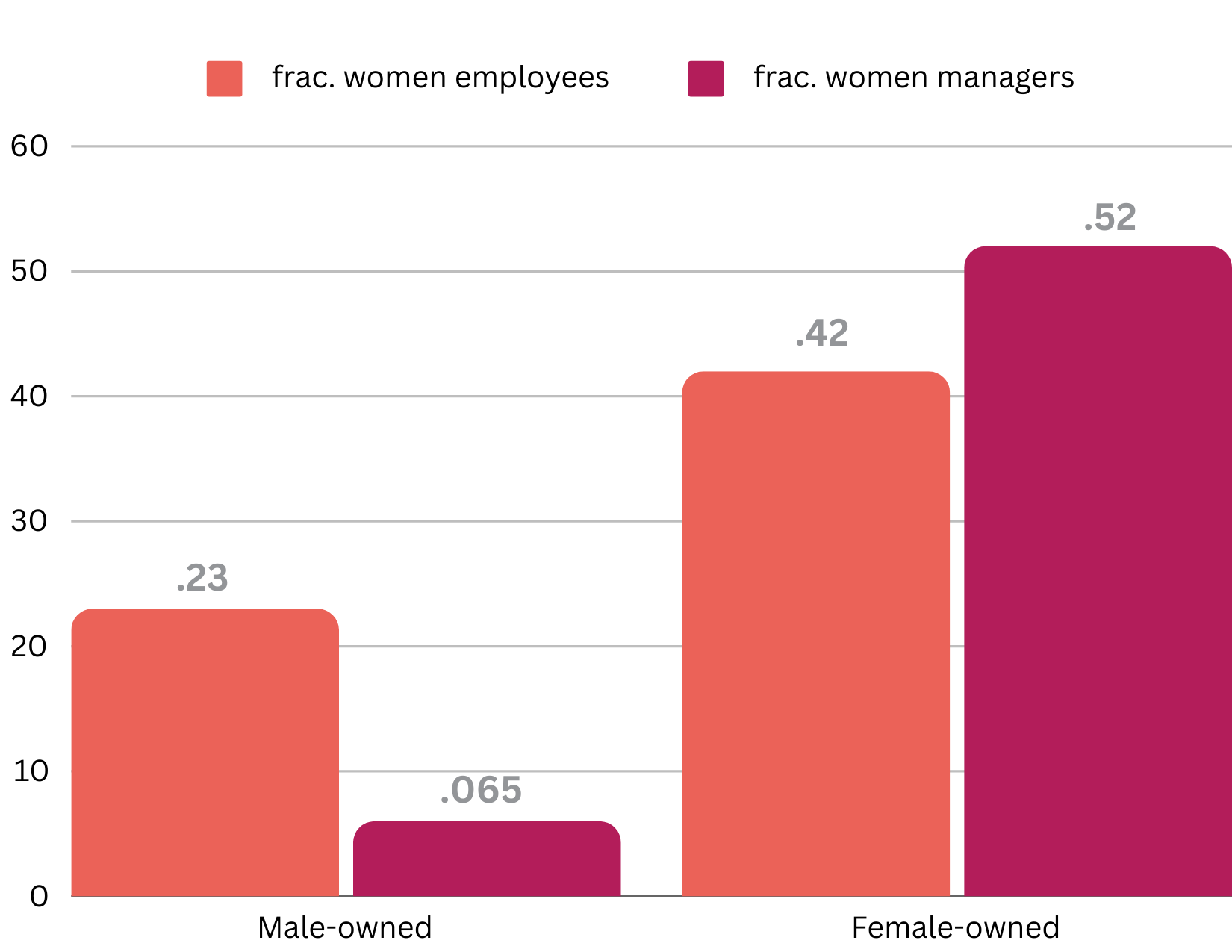By Elizabeth MacBride, Senior Knowledge and Advocacy Consultant, We-Fi Secretariat
Removing the barriers to women’s entrepreneurship in developing markets would lead to an explosion of female-led growth as women entrepreneurs hire and promote other women, according to new research that modeled the effect of lifting constraints and pointed to important policy recommendations.
The research, published by the National Bureau of Economic Research (NBER), was carried out by Pinelopi K. Goldberg, Elihu Professor of Economics at Yale University and former World Bank Chief Economist, and Gaurav Chiplunkar, Assistant Professor of Business Administration at the University of Virginia. The authors found that with gender-based distortions removed from the market, women entrepreneurs would add significantly to economic growth as they create more jobs for women.
In the modeling based on the formal and informal economy in India, the fraction of female-owned firms in the economy rose, and female labor force participation and earnings went up, when gender biases were removed. Labor force participation for women doubled, aggregate productivity was 3% higher, and welfare (real income) was 43% higher.
“These gains are large and suggest that promoting gender equality in entrepreneurship can contribute meaningfully to economic development,” wrote the researchers. “Our analysis demonstrates that eliminating excess barriers to entrepreneurship facing women is beneficial not only to women, but to the entire economy.”
The researchers’ work is hypothetical. Indeed, it would be difficult to remove all the artificial barriers, many of which are related to gender norms. Yet, the research is groundbreaking in that it offers insights into the richer world that would exist without gender divisions, and offers some suggestions for policymakers on where to focus first.
The potential for large gains is anchored in a simple fact: Female entrepreneurs hire women at higher rates than male entrepreneurs do. While 23% of employees in male-owned firms are women, the share of female employees is 42% in female-owned firms, based on a sample of more than 125,000 firms surveyed under the World Bank’s Enterprise Surveys. While only 6.5% of male-owned firms have a woman as their top manager, over 50% of women-owned firms have a woman as their top manager.
When Goldberg and Chiplunkar looked at the differences across productivity, fixed costs, hiring and labor-force participation, they found women face significant barriers in the latter three. They then developed a model to estimate the higher costs and simulate removing some and all of them. Women entrepreneurs have an advantage over men in only one area: hiring other women.
Fraction of women employees and the probability that the top manager in a firm is a female

Source: World Bank Enterprise Surveys
Fixed costs are things like registering a business, or finance costs; hiring barriers could be norms such as objections by men to working for women or gender norms that keep women in the informal economy; and barriers to labor-force participation are things like child care costs and norms that keep women from working outside the house.
Key Findings and Recommendations
Along with the economic estimations, the research produced three key findings, and two recommendations for policymakers.
- Labor force participation costs are roughly twice as large for women than for men on average, despite a significant decline in recent years. Similarly, women entrepreneurs face a 10-20% higher cost of expanding their business through hiring (both in the informal and formal sectors), compared to their male counterparts. This finding is reinforced by the fact that women comprise the vast majority of micro entrepreneurs but are steadily less represented in medium and larger businesses.
- The only area where female entrepreneurs have a significant advantage over their male counterparts is in the employment of female workers.
- Third, it’s harder to expand a business than to start one, even for women who are already participating in the economy as workers.
The researchers suggested policymakers combine efforts to increase women’s labor force participation with efforts to support women entrepreneurs. In fact, focusing on increasing the supply of workers without supporting the demand side of the equation – jobs — could result in wages declining for women. Because male entrepreneurs are so much less likely to hire women, supporting women entrepreneurs to grow their businesses is the best avenue to increase the demand for women workers, the researchers suggested. “Boosting labor demand (in addition to labor supply) … results in additional profits for female-owned firms, as well as larger aggregate productivity and real income gains,” they wrote.
Second, the research showed that in the context of the Indian economy, supporting existing female-owned enterprises, rather than encouraging new female entrepreneurs, generates more economic growth.
The researchers’ findings emphasize the importance of taking a holistic approach to reform. Policies that promote the entry of female entrepreneurs advance women’s opportunities, but policymakers should also recognize that large gains in productivity and real income come from measures that enabled women entrepreneurs to grow their companies. “Similarly, policies targeting female (labor force participation) may succeed in increasing it, but the increase in female labor supply could depress women’s real wages in equilibrium, unless accompanied by a boost in labor demand for women.”
In fact, the analysis differs from existing literature in that the researchers modelled the impact of removing more than one constraint at a time. “Among other things, it helps us understand why sometimes relaxing one constraint at a time may not be particularly effective when other constraints are binding,” the researchers wrote.
And interestingly, the research highlighted the presence of “marginal” male-owned firms. In other words, if women entrepreneurs could complete without the artificial constraints of a gendered world, some male-owned firms would go out of business. In the simulations, this shift resulted in more productivity in the economy overall, as higher productivity female-owned firms replaced lower-productivity male-owned firms.
How the Research Was Done
The researchers used data from two waves of the Economic Census in India to do their analysis on formal and informal non-farm enterprises. The research also adds to the research on women’s entrepreneurship by studying it in a developing-country context. Developing countries differ in that they often have large informal sectors, as India does. The researchers also noted that India has historically had low rates of labor force participation and entrepreneurship among women, though the former has been climbing.
The researchers showed that barriers to women’s entrepreneurship are correlated to gender norms by comparing their results to gender equality indexes. Barriers to entrepreneurship were higher in regions of India that score worse on indexes that measure norms such as participation of women in household decision-making, preference for sons, and the domination of men over women.
Goldberg and Chiplunkar suggest further research into which policies could eliminate which kinds of barriers. For We-Fi’s summary of what works to promote women’s entrepreneurship, click here.

